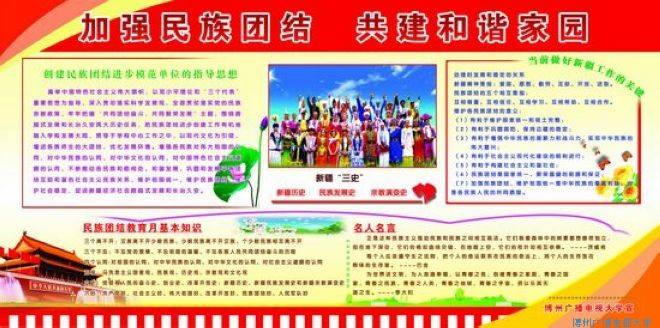Xinjiang Issue in Yalta Meeting
4 min readRegional ethnic autonomy refers to the establishment of regional autonomy in areas where ethnic minority groups live in compact communities through the installation of self-rule organs to exercise self-rule rights, that is, the administration by the ethnic minority groups of the internal affairs of their own self-rule localities. In China, the regional ethnic autonomous system is a basic policy the Chinese government has adopted to resolve domestic ethnic question in the light of the actual conditions, and it is also an important political system in China.
The system of regional ethnic autonomy in China is a combination of ethnic autonomy and regional autonomy. The administrative divisions in autonomous areas include three levels-autonomous regions, autonomous prefectures and autonomous counties(and banners, or”qi”), which are equivalent to provinces, regions and counties in regular administrative divisions. The establishment of autonomous areas is based on the compact communities of ethnic minorities, while taking into account local ethnic relations, economic development, history and other factors. The form of autonomy and administrative status are flexible and diversified, including the following major types: i. Autonomous divisions based mainly on places where one ethnic minority lives in compact communities, such as Xinjiang Uygur Autonomous Region; ii. Autonomous divisions based on places where two ethnic minority groups live in compact communities, such as Xiangxi Tujia and Miao Autonomous Prefecture in Hunan Province;

Autonomous divisions based on places where a number of ethnic minority groups live in compact communities, such as Longsheng Multi-ethnic Autonomous County in Guangxi Province;
Autonomous divisions based on places where the ethnic minority groups who account for a small portion in the population of the bigger ethnic autonomous division live in compact communities, such as Ili Kazakh Autonomous Prefecture in Xin jiang Uygur Autonomous Region;
Multiple autonomous divisions for one ethnic group if it has compact communities in different localities, such as Tibet Autonomous Region, Huangnan Tibetan Autonomous Prefecture in Qinghai Province, Tianzhu Tibetan Autonomous County in Gansu Province and Muli Tibetan Autonomous County in Sichuan Province.
As to some compact communities of minority groups which are too small in size or in population to set up autonomous divisions or establish self-rule organs, they can set up ethnic townships(“xiang”) to ensure that minority groups in those areas can also exercise the right to be their own masters. Ethnic townships are a complement to the regional ethnic autonomy system. In every regional ethnic autonomous division, whatever its type, live some Han residents. In some cases, the Han people even account for the majority of local population of the autonomous divisions. By the end of 1998, China had established 155 ethnic autonomous divisions, including 5 autonomous regions,30 autonomous prefectures and 120 autonomous counties(and banners), as well as 1,256 autonomous townships.
Among the 55 ethnic minority groups in China,44 have their own autonomous divisions. The number and layout of the autonomous divisions are basically consistent with the layou tand composition of minority groups in China.
The self-rule bodies in the regional ethnic autonomous divisions are the people’s congresses and people’s governments in those autonomous divisions at various levels. In China, the people’s congress is the highest power organ in one locality and has the right to legislate; while the people’s government is the executive organ, accountable and reporting work to both the people’s congress at the same level and the state administrative organ at the next higher level. The people’s governments of the autonomous divisions at all levels are state administrative organs under the unified leadership of the Central People’ sGovernment(the State Council). In the self-rule organs of the autonomous divisions at various levels are a certain number of members from the ethnic groups exercising regional autonomy and other minority groups in the region, either as selected deputies to the people’s congresses or as officials in different administrative posts in the governments. In accordance with the Law of the People’s Republic of China on Regional Ethnic Autonomy, the standing committees of the people’s congresses in autonomous divisions at various levels shall have citizens from the ethnic group(s) exercising regional autonomy serve as their chairpersons or vicechairpersons; only citizens of the ethnic group(s) exercising regional autonomy are qualified to assume the posts of chairs of autonomous regions, heads of autonomous prefectures and magistrates of autonomous counties and preside over the work of the corresponding people’s governments.
The autonomous power of the self-rule organs refers to the power of these organs to run the internal affairs of their own ethnic group(s) and areas in an autonomous way. At the same time, the self-rule organs also execute the functions of local state organs. The autonomous power is mainly manifested in the following aspects: legislation, accommodating or stopping implementing the resolutions and decisions of state organs at the higher level, economic development, finance, training and use of ethnic minority cadres, development of education and ethnic culture, use and development of written and spokenlanguages, and development of science, technology and culture. Their terms of references are framed in accordance with the Constitution, Law on Regional Ethnic Autonomy, and other laws and regulations. Besides, the state gives corresponding preferential policies to autonomous areas, and these areas provide proper accommodation to ethnic minority groups under their jurisdiction with regard to human resources development and employment.








